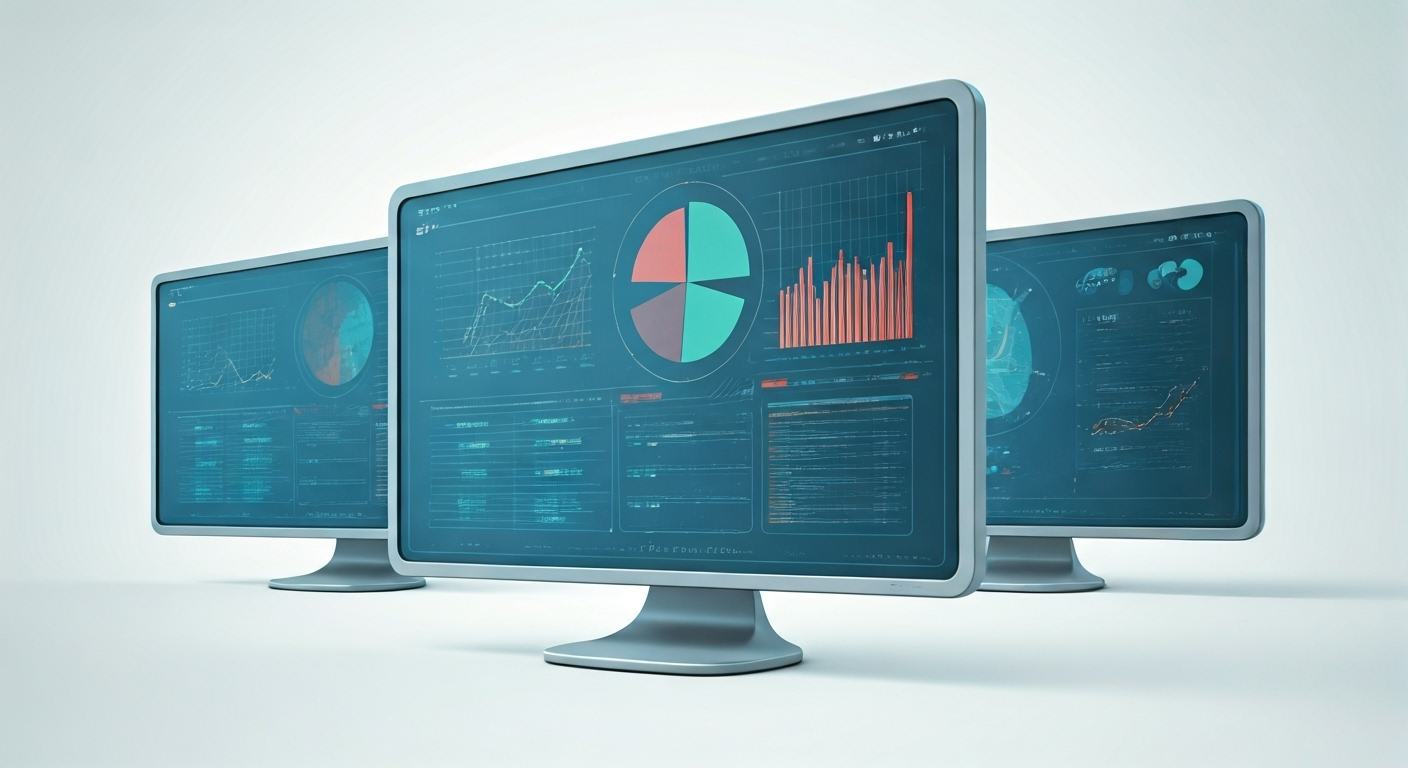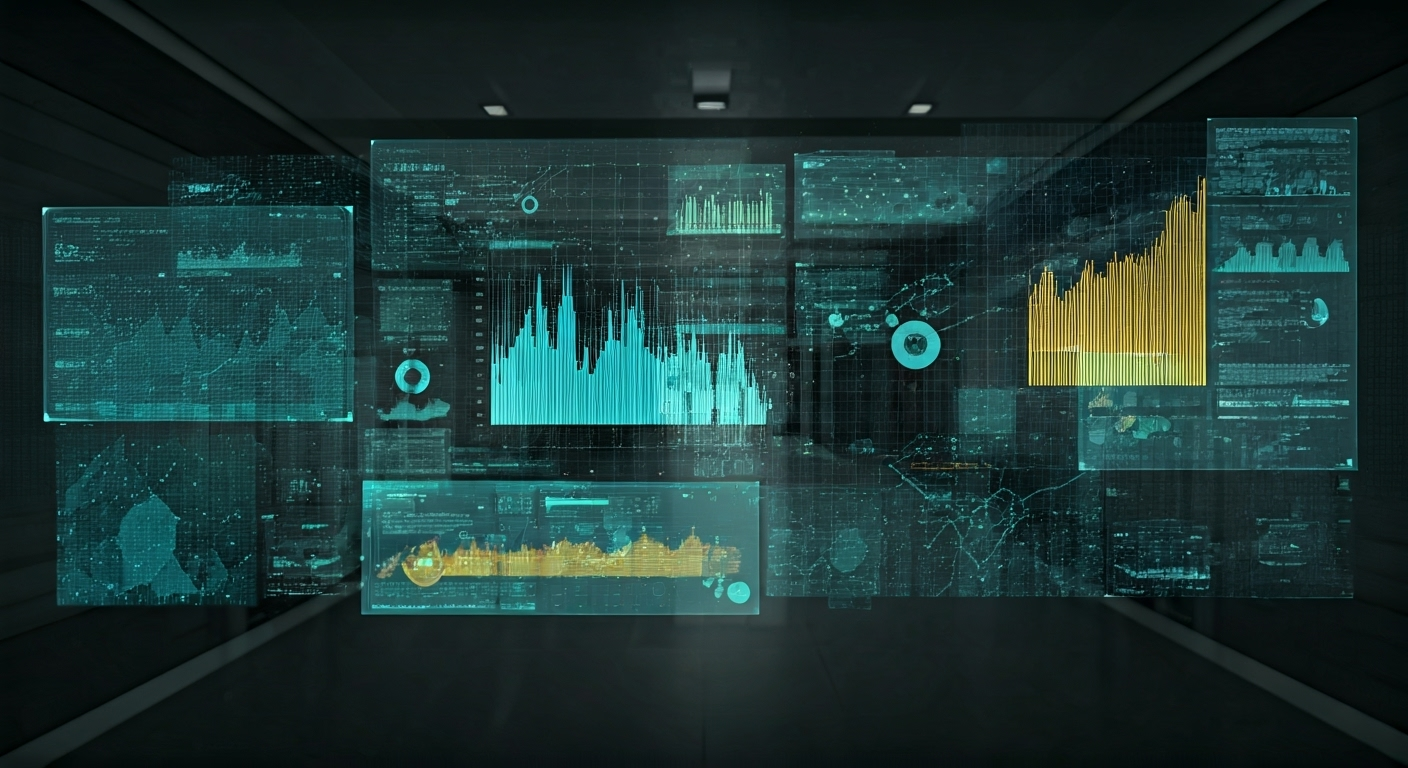Grasping Energy Data Management for Enhanced Efficiency
Grasping Energy Data Management for Enhanced Efficiency

Key Highlights
- Energy data management is a key part of energy management. It helps with the systematic collection, interpretation of energy data, and analysis to use less energy and cut costs.
- Advanced ways of working with energy data use analytics and real-time insights. These are different from old methods because they give up-to-date, useful information.
- Technologies like IoT, sensors, and energy management software play a big role. They make work more efficient and add transparency in the system.
- Using EDM is a good way for any business to follow rules and laws, push for greater sustainability, and shrink their carbon footprint.
- Companies, big or small, can use EDM to make workflows smoother and improve their bottom line in a good way.
- The blog helps answer questions and provides real guidance for those who want to set up EDM systems in their work.
.
Introduction
Today, more people and groups want energy efficiency and sustainability. To do this, it is important to understand energy data management. This work uses data management to help with the way we see and control energy data. It helps people and businesses use less energy, lower costs, and follow strict rules about the environment.
If you work with good and clear energy data, you get the power to track, plan, and take care of your energy usage the right way. Better equipment performance, lower greenhouse gas emissions, and long-term operational efficiency are easier to get with edm. There is no better tool to reach big environmental or energy goals than smart energy data management.
Defining Energy Data Management
Energy Data Management is about collecting and looking at energy data to help people make better choices and save more energy. By using systematic collection and the right analytics tools, organisations can see useful trends in their energy usage.
This process is the base for any energy management plan. When companies look at their energy data, they find ways for cost reduction, improve how things work, and support their sustainability plans. Energy Data Management is more than simple tracking. It gives a complete way to bring together money goals and environmental needs using good data management techniques.
.
Key Concepts and Terminology
Understanding the main parts of energy data management is important for getting good results. It starts with data collection, where you use sensors and meters to watch energy consumption all the time. This helps you find out usage patterns and when people use the most energy.
After this step comes analytics. Here, you look at the data by using dashboards and modules. Smart tools can find where things that waste energy happen and spot new trends. This gives you useful information. These dashboards show all kinds of data clearly, from costs to how much energy is used.
The last step is reporting. It puts together everything you learned in simple summaries. These reports help you see how the system is working. They give a picture of what areas need to do better or meet rules. When you use all these parts—data collection, analytics, and reporting—you make energy management systems better, manage costs, follow rules, and have good control over your energy data.
.
How Energy Data Management Differs from Traditional Energy Management
Energy Data Management (EDM) is changing how companies handle energy management. It puts real-time optimization before old ways like manual checks. Most traditional methods use basic checks and broad cost-saving plans.
With EDM, there are detailed workflows to follow. These use smart analytics and connect many systems. EDM looks at energy data to spot where energy systems do not work well. It does not just look at how much people use. EDM uses new technology to quickly keep up with changes in energy systems.
Old energy management usually just looks at past averages. EDM is different. It brings predictive tools to the table. These tools help predict how people will use energy in the future. EDM’s data management and analytics let companies lower costs before problems happen. EDM makes it possible for people to plan for the future and reach long-term sustainability with better energy usage and cost reduction.
The Importance of Energy Data Management for Efficiency

Energy data management is very important for any business that wants better energy efficiency and lower energy costs. When a company uses data management to study energy usage, the team can see where most energy is going. This helps to find where the business is wasting energy.
EDM is good for the business because it brings down costs. It also helps the business work better with environmental sustainability goals by reducing greenhouse gas emissions. Businesses can stay in line with strict or stringent regulations when they use EDM. Also, with EDM, companies can make sure their equipment works better and lasts longer.
Energy data, when used the right way, lets a business use its resources in the best way. This helps with workflows, brings out the best in equipment performance, and is good for the environment and the business in the long run.
Reducing Operational Costs
Energy Data Management is a tool that helps to lower what you spend and manage resources better. Here’s how it does that:
- Energy Cost Tracking: Sensors and analytics look at the way you use energy to spot waste.
- Energy Bill Minimisation: Dashboards show which parts of your use need to change so you can lower bills.
- Optimised Equipment Use: Regular checks stop big energy costs by finding problems early.
- Strategic Budgeting: Modules in the system use your data to give reports, letting you plan how to buy energy in a smarter way.
When you use EDM, you get more out of every bit of energy. This saves money by cutting down on extra use and high bills. That means your company can keep going strong for years to come. With data management, your team can work better, use new analytics, and keep energy bills low by using smart dashboards, sensors, and helpful modules.
Supporting Sustainability and Compliance
Energy data management has a big part to play in helping companies with sustainability and following strict rules. By cutting down on energy consumption, businesses also lower their greenhouse gas emissions. This helps them shrink their carbon footprints.
Also, tracking energy data in real time helps companies keep in line with strict regulations about energy consumption and lower emissions. Following these rules is not just to avoid getting fines. It helps companies show that they care about people and the planet.
When you focus on transparency with EDM, it boosts your business reputation. It helps you meet your sustainability goals. This makes it good for both your profits and the planet.
Core Components of an Effective Energy Data Management System

Energy Data Management (EDM) system works best when there is a clear process for data collection. Sensors and meters are used to get real-time energy data. This helps make sure that the data is complete.
Central analytics tools then use this information to give key insights. These insights help improve workflows and systems. The reporting options in the system turn these insights into plans that fit different work goals.
Together, these parts make EDM systems a key tool for resource management. Businesses can use EDM to stay ahead in a world that cares about being eco-friendly and competitive.
Data Collection and Integration
Data collection is at the heart of energy data management systems. The system uses sensors and meters to gather exact and clear information about energy consumption.
Integration makes sure the data does not be separate or unused. This data connects directly to dashboards, workflows, and analytics tools. With all of this joined together, a business can watch how energy is used in real time and how it links to the way things are done each day.
When you put data collection and integration together, you give an organization a way to find and fix where energy is not being used well. You also help match energy use to sustainability goals. This makes the system more simple and strong for daily work.
Data Validation, Analysis, and Reporting
Energy Data Management relies on the stringent validation of collected data. Validation eliminates inaccuracies, ensuring transparency and reliability.
Through detailed
analysis, large datasets are transformed into valuable insights regarding energy usage trends, inefficiencies, and projected demands. Tools like AI and scalable systems make this process seamless.
| Aspect | Details |
|---|---|
| Validation | Quality assurance through rule-based checks |
| Analysis | Advanced metrics to identify inefficiencies |
| Reporting | Dashboards summarizing actionable insights |
Finally, reporting simplifies this data into digestible summaries, granting businesses clear paths for cost-saving actions.
Leveraging Technology for Improved Energy Data Management
Technology is changing how we do energy data management. Now, there are real-time tools that help us be more efficient. With AI and IoT, data collection becomes better and system performance also improves.
Cloud systems help us adjust and grow as the energy market changes. When you add software integration, workflows get better. This makes EDM a main part of the work, helping people stay efficient and follow the rules. It also supports new ideas and encourages innovation in data management and energy data.
Role of IoT and Smart Sensors
IoT and smart sensors are changing the way we do energy management. With smart sensors, you can check equipment performance in real time. This helps organisations spot problems fast.
Using IoT, different devices link up easily. This lets the modules in your energy setup talk to each other better. For example, sensors can help control cooling systems. They do this by reacting to changes in the air temperature, which helps boost operational efficiency.
When sensors and IoT work together, you get better and quicker use of your resources. It helps cut down extra energy use and makes workflows better.
Energy Management Software Solutions
Energy management software helps make energy systems work better for a long time. It follows ISO rules, so all modules work in the same way.
Dashboards bring all data into one place. This makes it much easier to look at things like energy use, cost, and if everything is working as it should. Some systems also add datalakes. This helps with analytics and lets you store lots of data for many years.
By making workflows the same and clear, energy management software gives you more transparency. For any group that wants to make more money and hit their efficiency goals, this software is a key tool.
Conclusion
To sum up, using good energy data management in a group is an important way to get better results in how you use energy and help with sustainability. By setting up strong ways for data collection, checking, and looking at your information, a business can lower costs and follow environmental rules. When you use new technology like IoT and energy management software, you get even more power to watch and control your energy usage. If you start to use energy data management in your work, even taking the first step will make a real change in how you handle energy. If you want to find better ways for energy in your group, get in touch with our team for a free talk!
Frequently Asked Questions
What types of data are most important in energy data management?
Critical data is made up of energy usage, how equipment is working, and sensor readings. People gather these numbers in a steady way to be sure about the facts. These details are the basis of good data management for energy. By using this information, you can make better choices about energy use and ways to improve how things run. This helps in making workflows better, and it also makes energy data easy to handle.
How does energy data management improve energy efficiency?
Energy efficiency gets better when you use analytics to guide choices. EDM collects real-time data about how much energy you use. It helps you find where you use too much energy and points out where to make changes. When you follow these ideas, you use less energy. This also cuts down your costs in a big way.
Is energy data management relevant to small businesses or only large enterprises?
Both small and big businesses can get a lot from good data management. Using an energy data and EDM system in the right way helps a company do its work better. It can make their workflows smooth, and boost operational efficiency. This also means there can be a good effect on their money and profits.
What challenges do organizations face when implementing energy data management systems?
There can be some problems when putting the system in place. Some of these are making sure it works well with other systems, keeping data collection right, and following all the rules for regulatory compliance. Being open about workflows and giving employees training will help make this change smoother and get the most out of it.
How can businesses get started with energy data management?
Start by using sensor-based data collection tools together with dashboards and analytics. Looking at the energy market and putting in structured EDM systems will help lay a good base. This way, management and work routines can get better and more efficient.


